SENEGAL
Plants and Animals

Plants and Animals

Plants and Animals
Plants
The southern edge of the Sahara bisects the north and east of Senegal. Due to the ongoing desertification, the flora and fauna has undergone major changes over time. The rich animal and plant life will most likely never return.
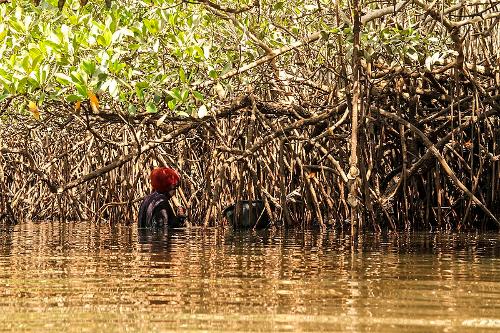 Mangrove forest SenegalPhoto:Julien saison CC 4.0 International no changes made
Mangrove forest SenegalPhoto:Julien saison CC 4.0 International no changes made
Due to the drought and the advancing desert, the north of Senegal has a savannah landscape with low grasses, shrubs and some acacias. Fruit trees and palms are already found a little further south. Mangrove forests are found in the estuaries of the Saloum and the Gambia. Mangrove forests, palm tree forests and tropical rainforest are found in the Casamance. And there are also mango trees, kapok trees and kola nut trees.
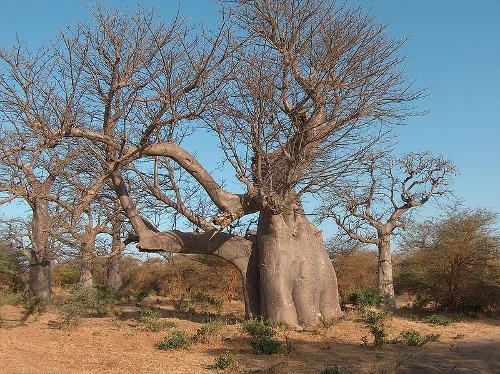 Baobab, SenegalPhoto: Myriam Louviot CC 3.0 Unported no changes made
Baobab, SenegalPhoto: Myriam Louviot CC 3.0 Unported no changes made
The most characteristic tree of Africa is particularly found in the dry regions: the baobab or monkey bread tree, which is also the national tree of Senegal. The baobab grows to about 20 meters high and can live for more than 1000 years. The tree plays a role in many African myths and legends. The bark, the fruits, the leaves, the wood, almost everything from this tree is used by the population.
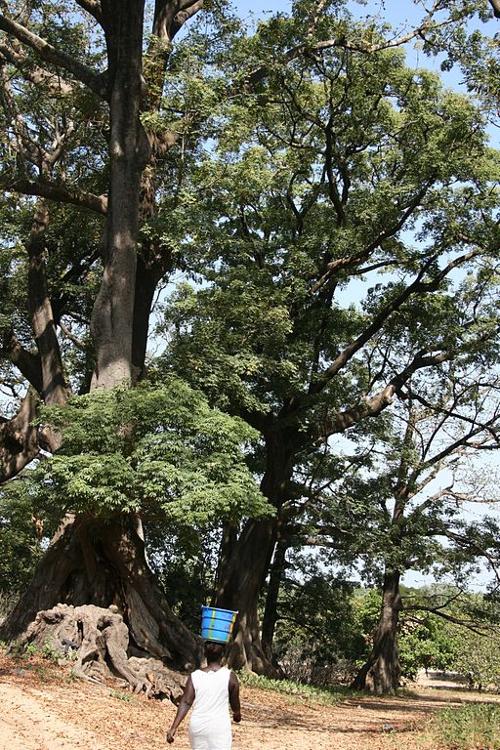 Kapok tree SenegalPhoto: Olivier Epron Olivierkeita CC 3.0 Unported no changes made
Kapok tree SenegalPhoto: Olivier Epron Olivierkeita CC 3.0 Unported no changes made
The kapok tree is very prominent in the southern half of Senegal; if only because the kapok tree can reach more than 50 meters in height. In the more humid areas bamboo grows, which is used to make furniture and yard fences, among other things. The evergreen mangrove tree can reach a height of 25 meters and grows in salt and brackish water.
In the flowering and blossom time bougainvillea, hibiscus and oleander, among other things, provide fantastic colors in the landscape.
Animals
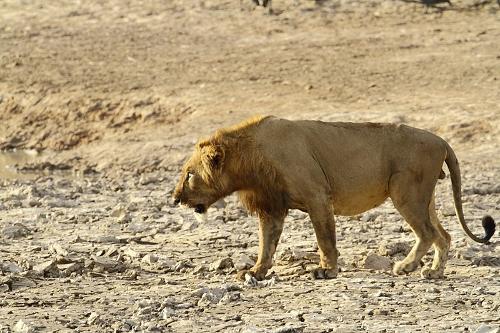 Lion, national animal of SenegalPhoto: Jonas Van de Voorde CC 3.0 Unported no changes made
Lion, national animal of SenegalPhoto: Jonas Van de Voorde CC 3.0 Unported no changes made
Large wild animals can only be found in the Niokolo Koba (8000 km2) national park. Lions, the national animal of Senegal, elephants, buffaloes and gazelles live there. The impressive, but rare Derby eland can still be found here. More than 300 bird species, 70 species of mammals and 60 species of freshwater fish have been counted in the park.
Crocodiles and hippos can still be found on the banks of the Gambia River. Smaller mammals such as deer, warthogs, hyenas, anteaters and mongoose are common.
Monkey species such as velvet monkeys, hussar monkeys, baboons and Colobus monkeys can be found all over the country.
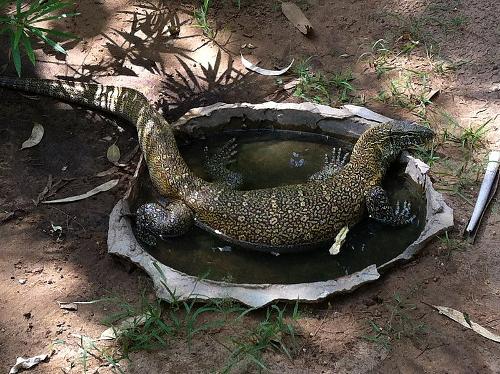 Monitor lizard SenegalPhoto: Pablo029 CC 4.0 International no changes made
Monitor lizard SenegalPhoto: Pablo029 CC 4.0 International no changes made
There are plenty of snakes in Senegal; pythons and poisonous vipers, cobras, green and black mambas are a threat to humans and animals. Large monitor lizards are hunted by the population, a delicacy!
Termite mounds can be found everywhere. Termites are the favorite food of the aardvark and giant pangolin. Furthermore, beautiful butterflies, creepy cockroaches and poisonous caterpillars.
There are many types of fish in the markets along the coast: sea bass, swordfish, tunas, sharks and barracudas. Crabs, lobsters, rays and squids are also caught in abundance.
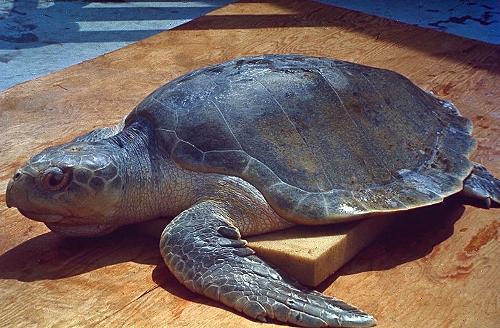 Sea turtle SenegalPhoto: Public domain
Sea turtle SenegalPhoto: Public domain
In addition to Niokolo Koba, Senegal has five more official national parks. The Parc National de la langue de Barbarie protects sea turtles that lay their eggs on the shore.
The Parc National des Oiseaux de Djoudj is one of the top ten most important bird areas in the world.
Sources
Derksen, G. / Gambia, Senegal
Gottmer
Dirkx, J. / Reishandboek Senegal
Elmar
Else, D. / The Gambia and Senegal
Lonely Planet
Gambia en Senegal
Cambium
Hesseling, G. / Senegal/Gambia : mensen, politiek, economie, cultuur
Koninklijk Instituut voor de Tropen
CIA - World Factbook
BBC - Country Profiles
Copyright: Team The World of Info